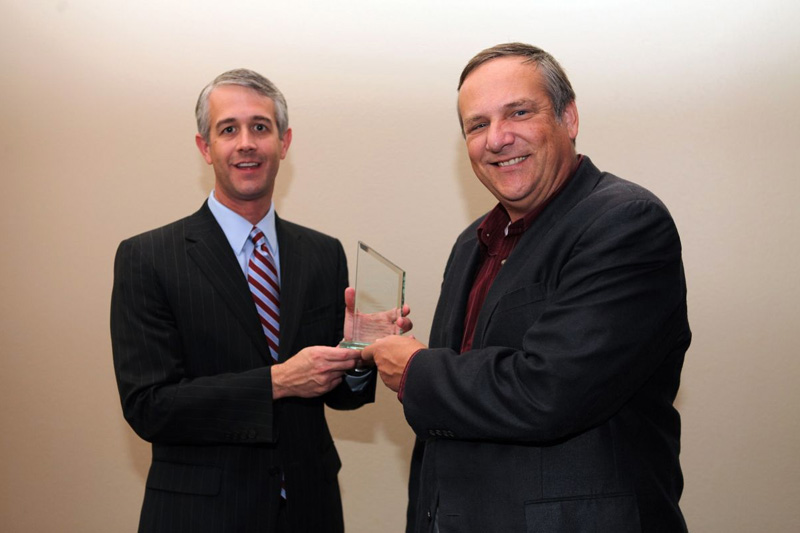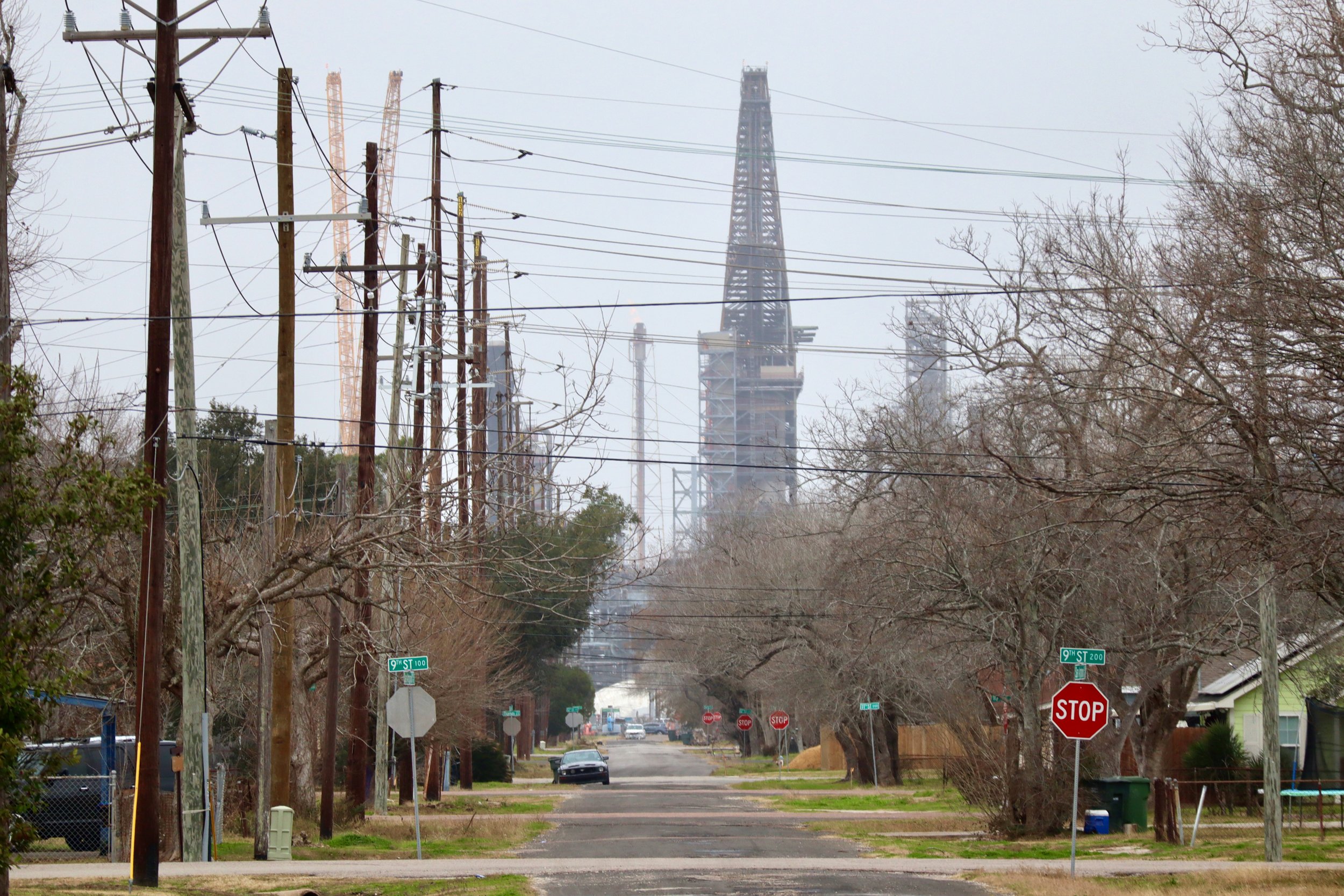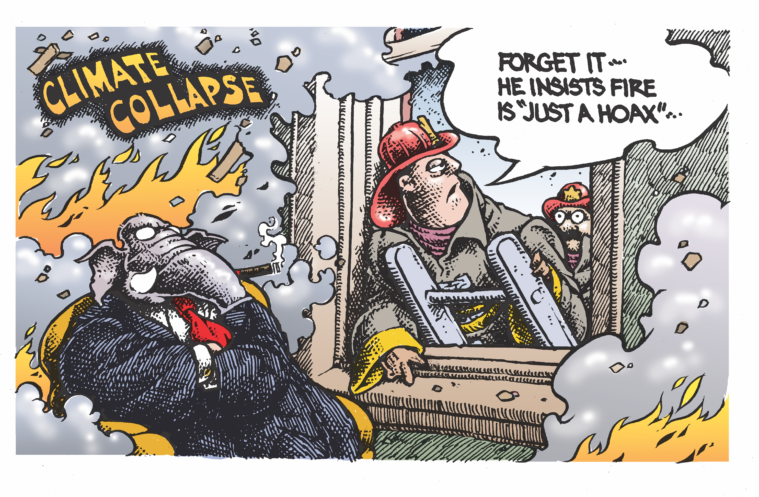
Is the Texas State Climatologist Doing His Job?
“Severe weather not due to climate change,” ran the comforting headline in a recent San Antonio Express-News interview with Texas State Climatologist John Nielsen-Gammon.
When asked in the opening question about the link between “climate change and severe weather patterns,” Nielsen-Gammon responded that U.S. Rep. Lamar Smith (R-Texas) is “essentially correct” to say that “long-term trends in weather disasters are not caused by human-made activity.”
While it would appear that he is denying climate change’s influence on severe weather (a perception bolstered by the headline), the nearly impenetrable reality is he was speaking about related economic losses from those storms. It’s not until the end of the interview that Nielsen-Gammon’s unequivocal position on global warming (“it’s real” and “mostly us”) becomes clear.
That performance by our state climatologist—tasked with monitoring and communicating Texas climate information from his Texas A&M University office since being appointed to the position by Governor Rick Perry former Gov. George W. Bush in 2000—led to a lot of grumbling among San Antonio environmentalists and beyond. The headline, with Nielsen-Gammon’s approval, was later changed to a more accurate, “Effect of man-made changes hard to quantify.”
“What I disliked on that one was the order of things,” said a Texas-based climate researcher who has worked closely with Nielsen-Gammon in the past and asked not to be identified by name. “I’m not sure he’s ever had any communication training.”
For years, scientists have warned that intensified heat and drought, more powerful storms and accelerating sea-level rise from unchecked climate change could challenge the ability of human society to adapt. It’s a warning that even the Pentagon has taken to heart.
But in Texas, that urgent message is denied outright by many of the state’s most prominent elected leaders and frequently downplayed in the media.
Environmental stories get little ink. And even when preeminent climate-change communicators get a platform in the press, as the Express-News flop shows, confusion can reign.
While Nielsen-Gammon is by all accounts a solid researcher and a prolific speaker, he rarely discusses climate change’s broader risks. When asked by the Washington Post this summer how he is able to perform his duties in a state where the leadership continues to dismiss the basic tenets of climate change, he responded:
“Generally what people care about [most] is the next few months or the next few years. … I get to focus more on adaptation and adaptation is something you have to do no matter what causes the climate to change.”
But some climate communicators say he’s missing an opportunity to educate.
“Nielsen-Gammon is right that most people are most interested about weather conditions in the here and now,” Tony Leiserowitz, director of the Yale Project on Climate Change Communication, “but there’s certainly a lot of people who are interested in putting their local experiences, especially of extreme weather, into the larger context of climate change.”
He’s also reticent to discuss the moral or ethical ramifications of our energy choices in Texas.
“I can’t get John to have that moral discussion,” said the Texas-based scientist, “at least not in the public sphere. And I don’t think he’s in any way an outlier in any way in this.”
Indeed, few scientists have chosen the life of an activist like James Hansen, who resigned his position at NASA’s Goddard Institute for Space Studies in April in order to devote himself full time to fighting for federal climate action.
Responding to emailed questions from The Texas Observer about the interview, Nielsen-Gammon defended his approach. “Imagine yourself a climate change skeptic reading the Q&A. When would you have stopped reading? I submit that you may well have read through to the end, and would have been left with something to think about,” he wrote. To assert too quickly that global warming is real and caused by humans would be to turn off those who don’t believe the basic tenets of climate change, he said.
“My communications strategy is designed to get past the filters [of conservative ideology] you write about.”
While he did not respond to a request for clarification last week, he appeared to be referencing a 2011 research paper analyzing a decade of Gallup surveys to suggest that more information about climate change is unlikely to move hard-right conservatives.
Climate scientist Michael Mann, author of The Hockey Stick and the Climate Wars, was dragged into the national spotlight when former Virginia Attorney General Ken Cuccinelli embarked on what has been described as a “witch hunt” against him for co-authoring the infamous “hockey stick” graph popularized in Al Gore’s “Inconvenient Truth.”
While not speaking specifically of Nielsen-Gammon, Mann, now at Penn State University, said climatologists frequently suffer from “scientific narrow-mindedness” in their work by downplaying or denying climate links to specific severe weather events rather than driving home the larger message of climate change’s immediate hazards.
“It would be like finding Lance Armstrong innocent of doping because you couldn’t prove that the steroids he had taken were responsible for him winning any particular race,” Mann said. “Many scientists in my view are far too reticent in the way they characterize the linkage between climate change and extreme weather.”
However, expecting Nielsen-Gammon to be a firebrand crusader is unfair, according to Katharine Hayhoe, director of the Climate Science Center at Texas Tech University, who frequently works with Nielsen-Gammon. A stark distinction exists between climatologists, who don’t typically come from hardbasic-science backgrounds (Nielsen-Gammon hails from meteorology), and climate scientists who do, she said. It’s a difference she likened to that which exists between a family doctor and a specialist like an oncologist.
“A climatologist’s job is not to look to the future. Their job is historical data analysis. They don’t study the physical drivers of climate. They don’t do modeling. They don’t do any kind of extrapolation. That’s not what they do,” said Hayhoe. “You’re expecting him to be something he’s not. He is a climatologist: His expertise is not future projections, future risks and future impacts.”
Nielsen-Gammon gave the big picture a shot last week at a climate change forum in San Antonio. Asked about our chances of keeping global temperature rise below two degrees Celsius and thereby preventing the most severe impacts of climate change, he said, “If we’re lucky … we’ll have a few more decades. If we’re unlucky, we’re already past it.” The room broke out in nervous laughter as the meeting wound down.
Meanwhile, a leaked Intergovernmental Panel on Climate Change report states that climate change will not only slow global economic growth this century, but increase death, famine and disease worldwide.
Just the sort of talk Nielsen-Gammon likes to avoid, but people in Texas—where only 44 percent of residents accept the scientific consensus viewpoint that humans are the main driver of global warming—need to hear.
“Perhaps,” Hayhoe suggested, “we need a state climate scientist.”


